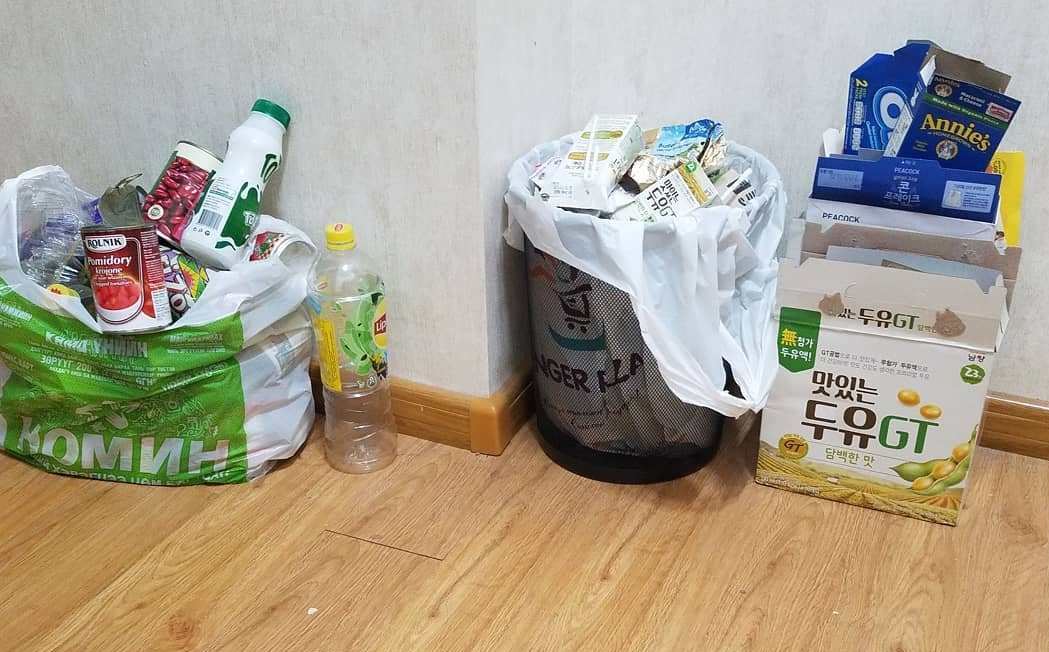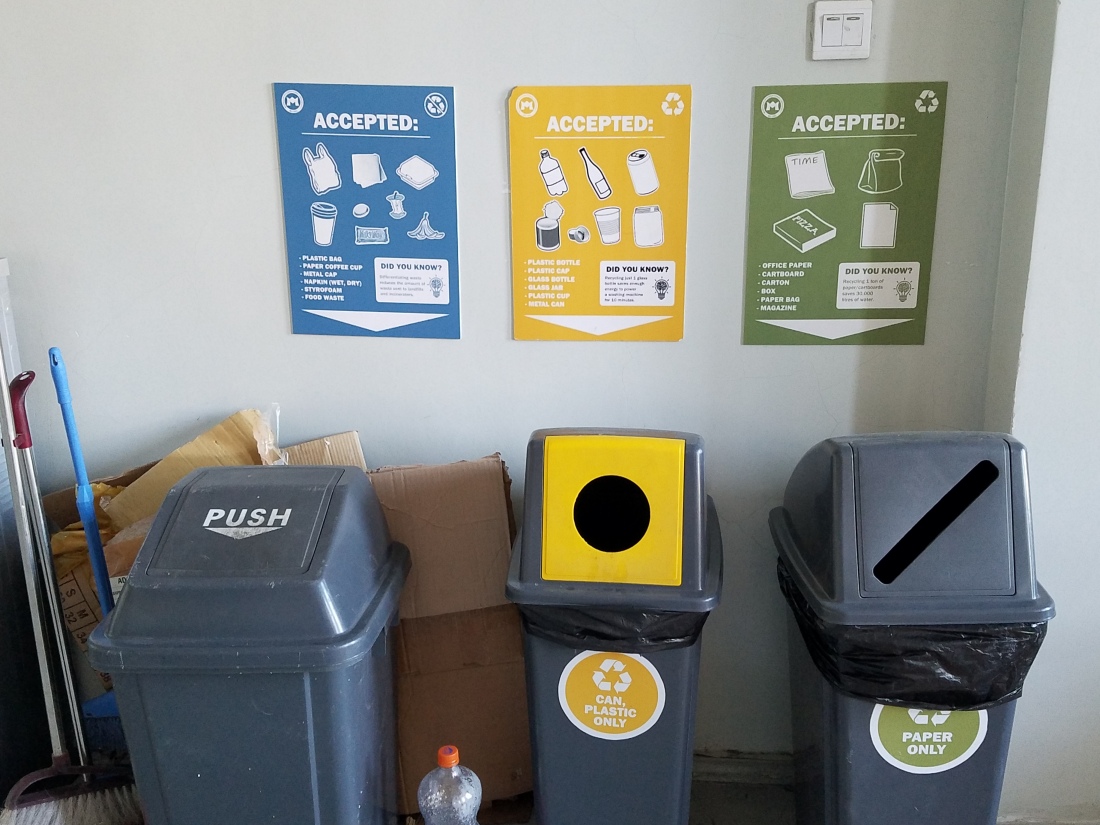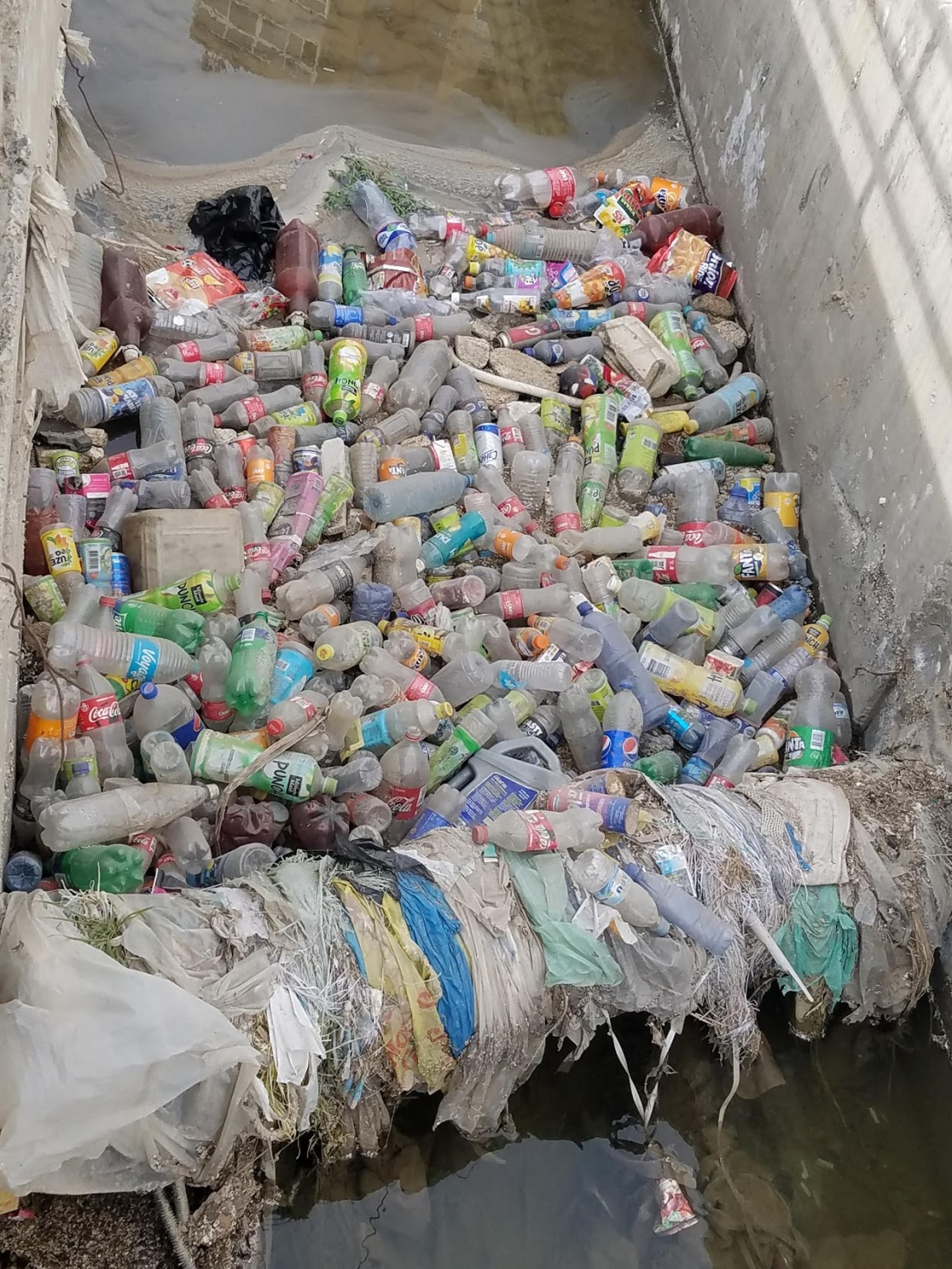
Throwing trash away is more complicated than it seems, especially when you move to a foreign country. True, garbage is not the most appealing topic, but since most people generate a significant amount of garbage in their daily lives, it’s an important one. Living in an environmentally progressive community in southern California, I got used to trying to create a minimum amount of garbage by reducing what I bought (especially product packaging!), reusing what I could, recycling as much as possible, and composting food waste. Here in Mongolia, I’m still working it out, though I know that I’m creating a lot more waste here than I did in California.
At my house in Carlsbad, my curbside recycling bin is larger than my landfill bin (my landfill bin is the smallest one available). I know recycling is an imperfect solution to the problem of overconsumption and waste, but it is worth doing. I grew up recycling. In New Jersey in the 1970s, there was a recycling center downtown next to the library, so we had to bag stuff up to bring in. One of my least favorite childhood chores was crushing cans for recycling, especially cat food cans. I still remember rinsing them carefully, removing the bottoms with a can opener, and flattening the cans so they would take up less space. I’m not as fastidious with my recycling now, though I still rinse out cans. Eventually, sometime in the 80s, we switched to curbside pick-up. The waste disposal situation in New Jersey was so dire that if people had recyclable materials in their garbage, the garbage collectors wouldn’t pick it up. (I still remember a famous boatload of trash New Jersey couldn’t get rid of; it went down to Central America, and no one wanted it. What a surprise!)
When I lived in Egypt in the mid-1990s, waste disposal was the bawwab’s problem (bawwabs are kind of like doormen; they live on the ground floors of apartment buildings and take care of just about everything). I gave him my plastic bags of garbage, and he got rid of them. There was garbage pick-up in Cairo. In fact, an entire informal economy was built on trash. Garbage collectors were known as Zabbaleen (literally “garbage people”); they would go from door to door and take people’s garbage away in their donkey-pulled carts. They would sort through it and reduce the waste by 80%. At the time, Western waste disposal recycled around 20% of waste, so the Zabbaleen were way more efficient. Most of the Zabbaleen were Coptic Christians, and they kept pigs, so the pigs would eat the organic waste. Then women and children would sort the rest for reuse and recycling. Some 50-70,000 Zabbaleen took care of the waste of the entire city; they lived in settlements next to the main garbage dumps, in what were often extremely unhealthy conditions. I know all of this because the company I worked for in Cairo, Environmental Quality International, worked on improving the living and working conditions of the Zabbaleen, and I edited a lot of proposals and reports about them.
In Japan, waste disposal was different again. We had four different bins to put trash in (burnable material for the incinerator, plastic, metal, and glass). Each kind went out on a different day of the week, so I spent a bit more time than I was used to dealing with my trash. It made me much more aware of what kind of waste I was creating, and how much. The fines for noncompliance were pretty steep, so households were careful to follow directions. For me, the trickiest category was “burnable”; I wasn’t used to thinking of garbage in this way because of the USA’s predilection for landfills. I didn’t consider plastic to be burnable (the fumes!), but it was, along with food scraps and paper.
When I moved to Mekelle, Ethiopia, in 1999, garbage disposal presented itself as a problem immediately. I was sharing a house with another volunteer teacher, and we had to deal with our own trash. There was no trash pick-up. There were yard cats to eat a lot of the food waste, and we had a barrel in the backyard for burning garbage. But there was stuff that couldn’t be burned. A girl who came to clean our house (she was a student from Mekelle University) would take our trash away with her, but I wasn’t sure what she did with it. I asked at my college about how people got rid of their garbage, but most people didn’t really have any. The food packaging was minimal to nonexistent. I saw small bags of trash alongside the roads and in the river that went through town, so I suspected that’s what people did with it. I knew there was a garbage dump somewhere, but I wasn’t sure where. Once I paid a boy to take our trash away, and then I saw him drop it in the gutter down the street. Well, I could do that! But I didn’t want to. I continued to give my garbage to the house cleaner, hoping she was disposing of it in some reasonable way.
Here in Mongolia, my university has sorted waste bins on campus: paper, plastic/cans, and general waste. They are labelled in English, with helpful pictures of what goes where. The cafeteria has bins for liquids, food scraps, and other trash (mostly napkins), and all the dishes are real, reusable dishes. The dorm where I live has garbage bins in the basement, one for general waste and one for comingled recyclables. I was excited about this, until I saw that people were throwing plastic bags containing all kinds of waste into both bins. So I thought, well, maybe there really isn’t recycling here after all. Then a sign appeared at the entrance to the dorm: “Please sort your trash!” A big cardboard box appeared in the basement that people put their plastic bottles in.

Even with recycling, Emma and I still generate more garbage here than we do in California. We buy a lot more packaged goods here, and the packaging is extremely wasteful sometimes (plastic-wrapped boxes containing plastic-wrapped items). Produce comes individually wrapped in plastic wrap, except for most onions, carrots, potatoes, and most fruit. I need to buy canned beans here because I haven’t been able to find dried beans. Emma doesn’t like the cow milk here, so we’ve been buying soymilk at e-Mart; it comes in cardboard cases of single-serving cartons with straws attached, which are not recyclable here. Nightmare! Also, we can’t flush toilet paper without destroying the septic system, so we collect our toilet paper in plastic bags to throw away (I would burn toilet paper in Ethiopia, and just put it in the trash I gave to the bawwab in Egypt; probably the Zabbaleen’s pigs ate it).
Honestly, some days my trash just freaks me out. But I do my best to feel like I’m disposing of it properly. I bring office paper over to the building where my office is to put in the paper bin there. I was also bringing bottles and cans over for a while, until the “sort your trash” sign appeared. I have a hard time throwing cardboard away, so that accumulates in the kitchen until I bring a load over to the office recycle bins. I’m pretending some other kinds of plastic are also recyclable, like the packages the eggs come in, though I need to look into that.
I’ve been doing a bit of research on what happens to trash in Ulaanbaatar. Uncontrolled urban expansion has made waste disposal a crisis for the city. One of the things I noticed the day that we arrived is how much trash is in the landscape – litter by the side of the road, trash in the river, informal dumps in vacant lots. Also, aside from ordinary household waste, there’s hazardous industrial waste, tires, and electronic waste. Proper waste disposal requires a lot of infrastructure and investment. In the informal settlements that house over half the city’s population, garbage pick-up is nearly impossible because of the lack of roads, waste bins, and other facilities. People are used to putting the trash outside, but once they become settled in a semi-urban area, this becomes even less of a good way to get rid of garbage. Waste is dumped in informal dumps or burned in the open air. Human “scavengers” (as one article called them) collect recyclable waste—including bottles, cans, and electronic waste—and bring it to waste transfer centers, from whence it goes to recycling centers or to China.
Even in the areas with garbage pick-up, disposal is not ideal. There are a few recycling centers in the city, but no comprehensive plan for sorting garbage, collecting recyclables, and delivering them to those centers. The official city landfills are not very well constructed or maintained, from what I understand, so waste often leaks into the environment. Fortunately, several organizations are working in improving urban waste management here. I’ll post more as I learn more about it!

Love the toilet paper story, “probably the Zabbaleen’s pigs ate it”!
LikeLiked by 1 person
So interesting… and, need I say “What an adventure!!” 😉
LikeLiked by 1 person
Recently visited Mongolia.What a wonderful country,full of tradition and history.
Very sad to see rubbish discarded throughout what appears to be a pristine environment (from a distance).
Hope the relevant politicians can see the value in setting an example in this unique destination.Sad to see Coca Cola and Pepsi featured so heavily during the Nadaam festival.Parasites!
LikeLiked by 1 person
Thank you for commenting, Ruth. Mongolia is a wonderful country. I’m glad you got to visit! Yes, the trash disposal is a problem in the city and the countryside – few facilities for properly disposing of the new forms of trash that have come into the county over the past several decades, and little education about it, either. And I totally agree about Coca Cola and Pepsi!
LikeLike